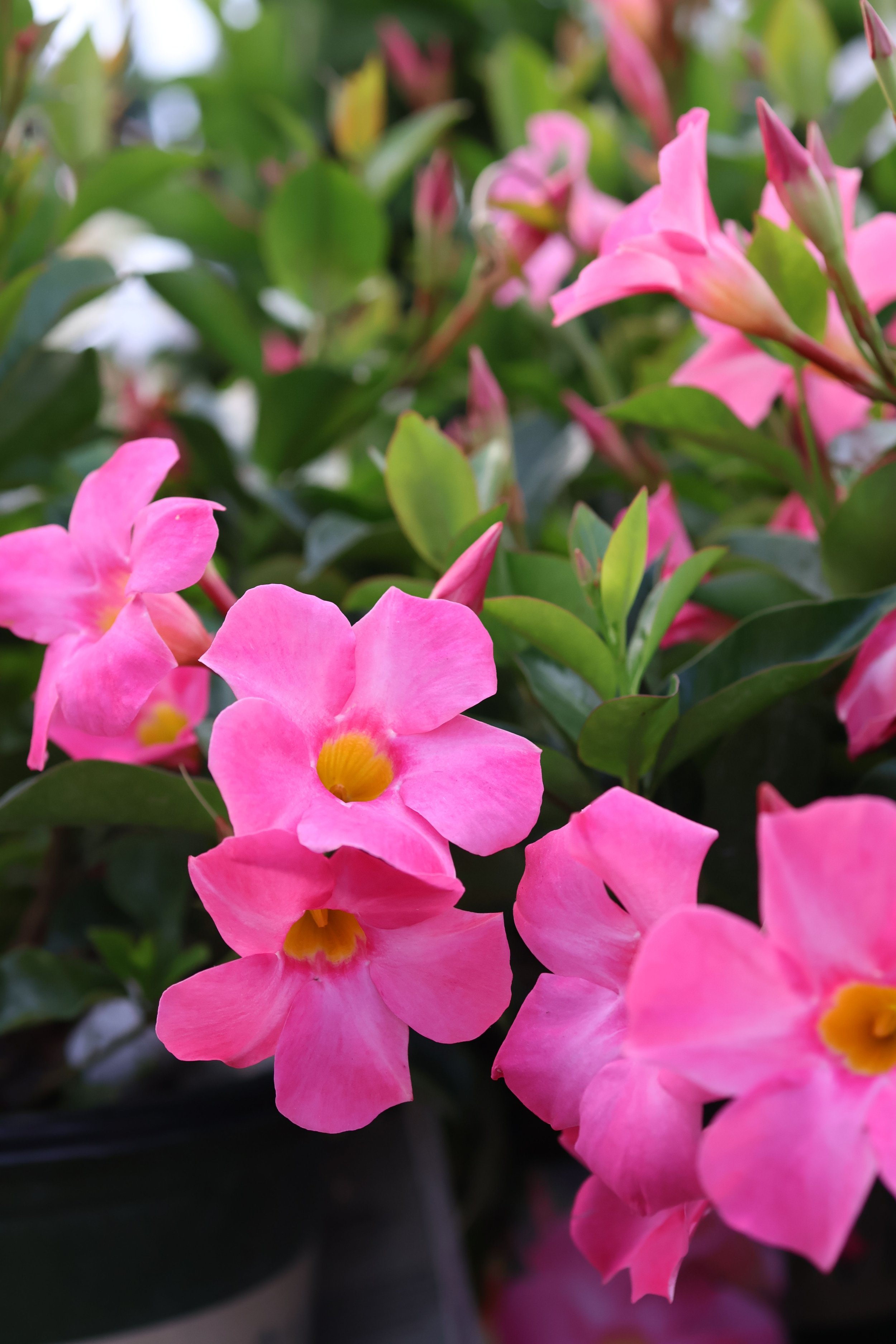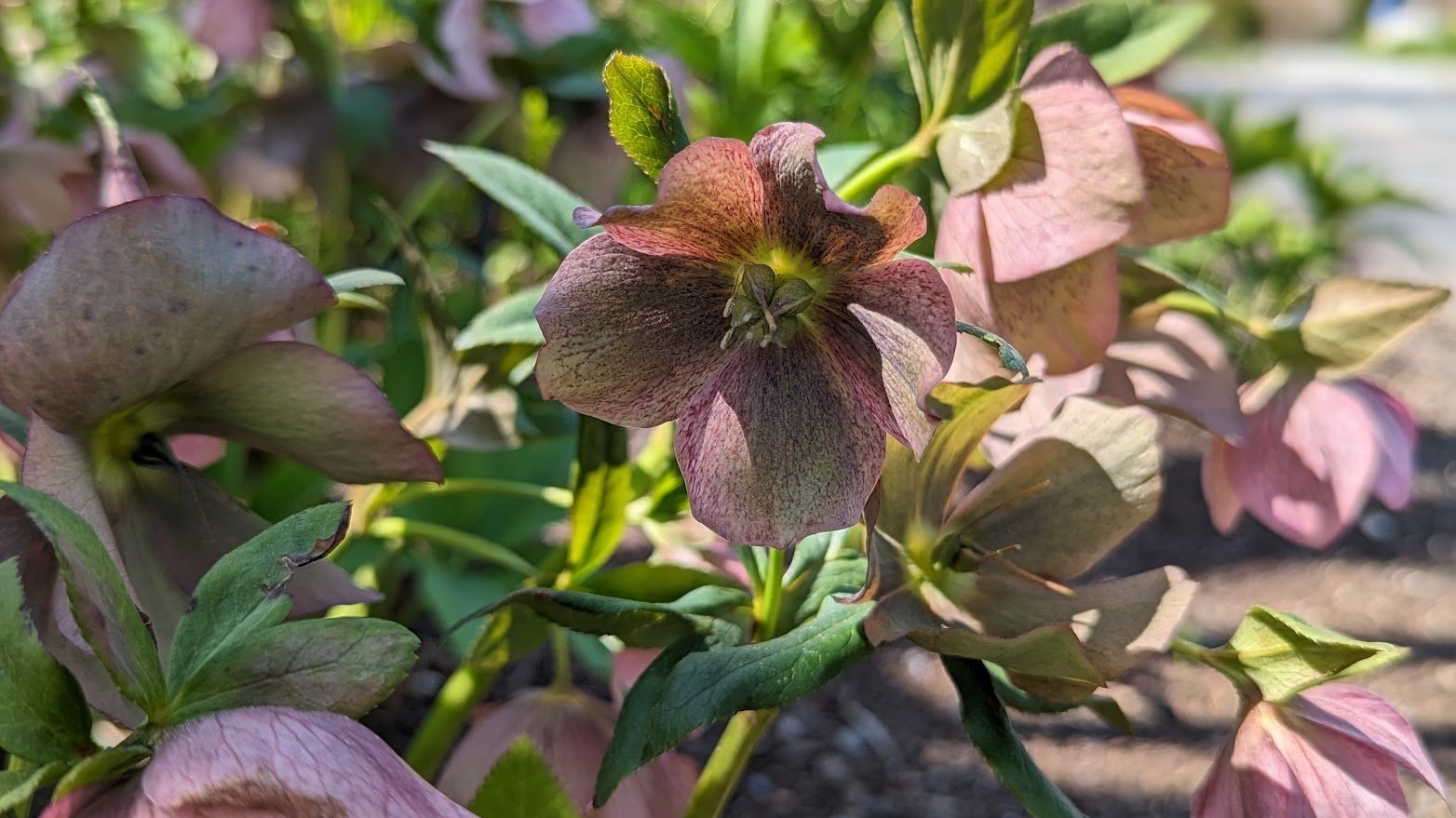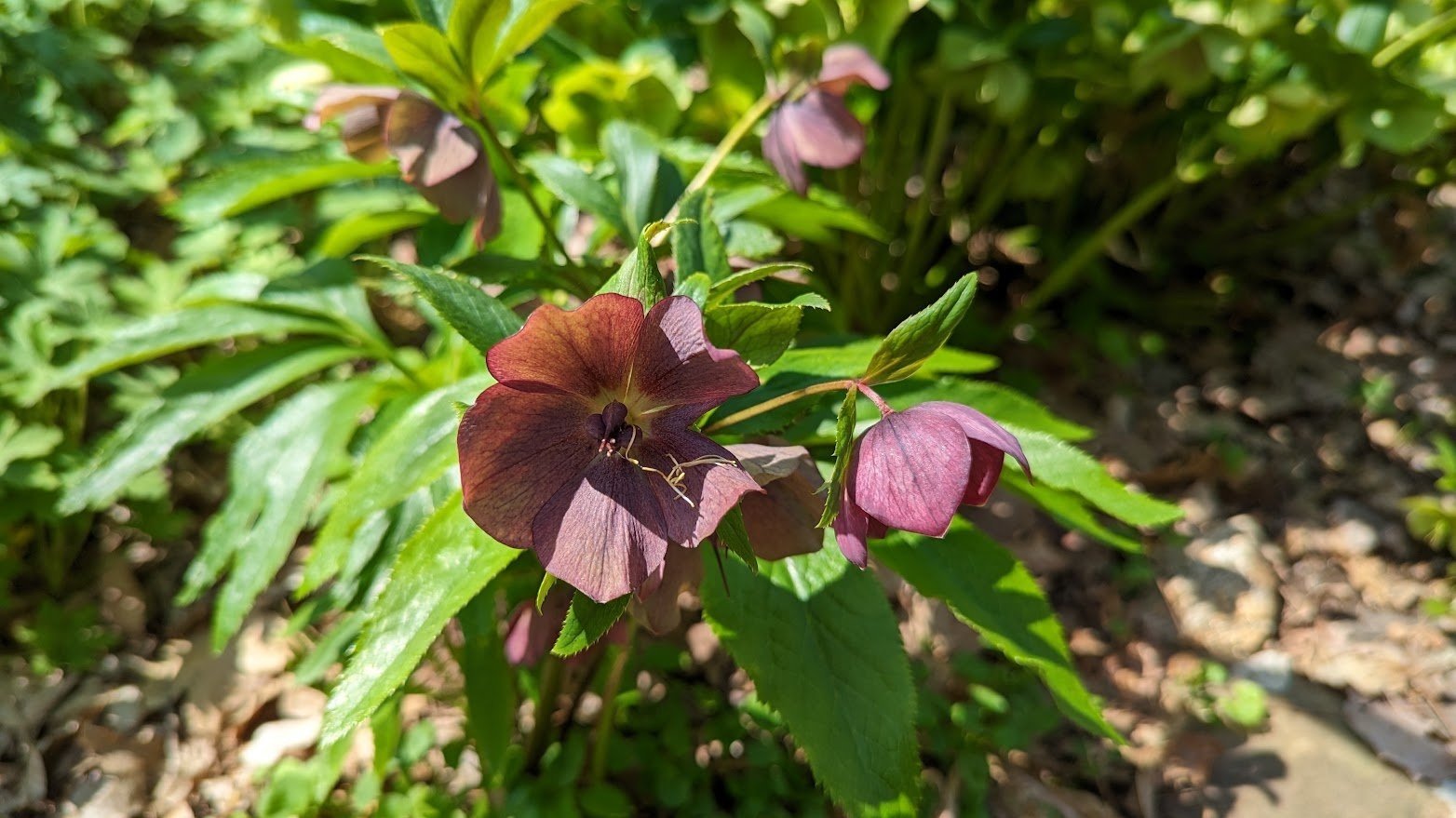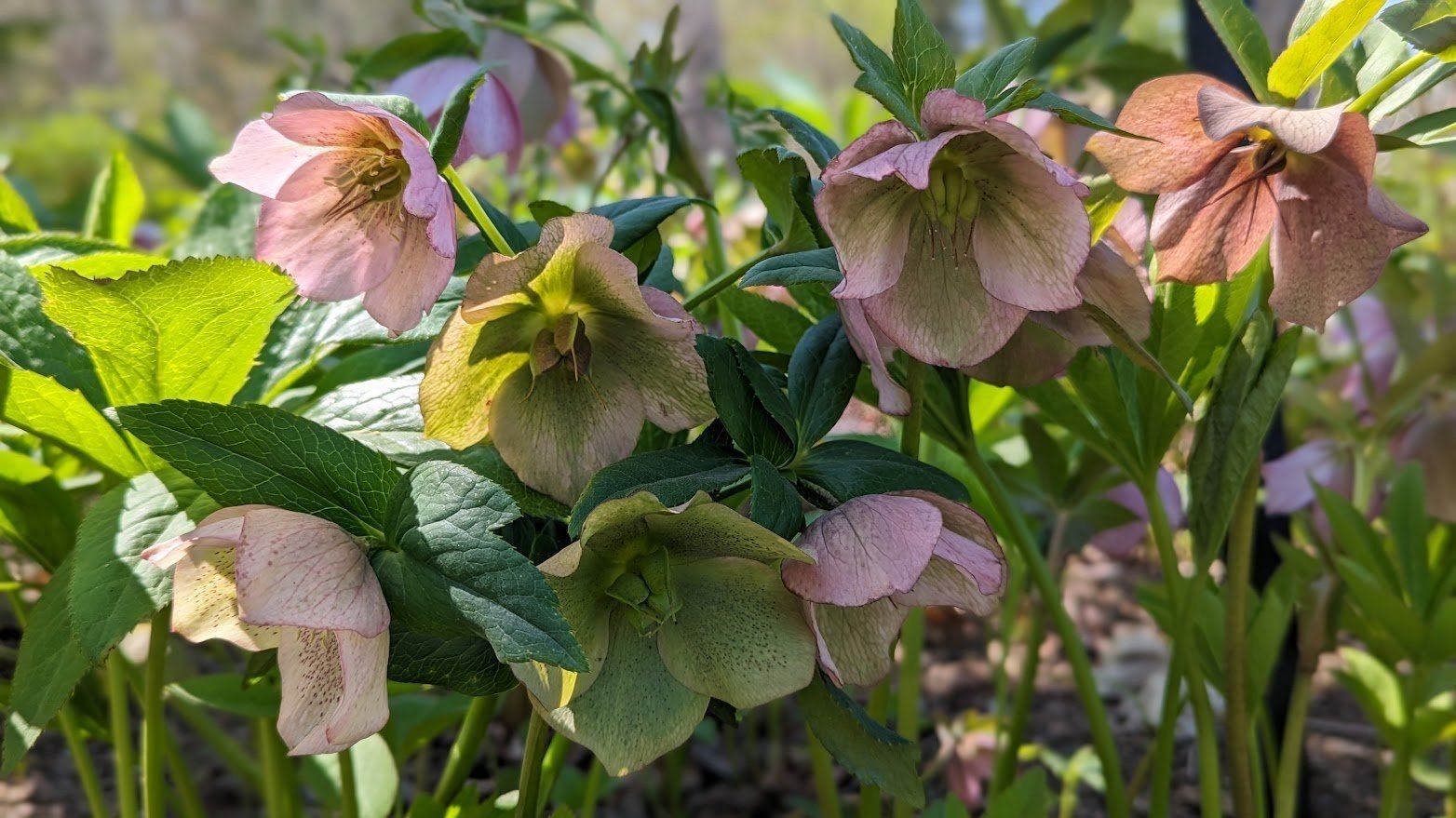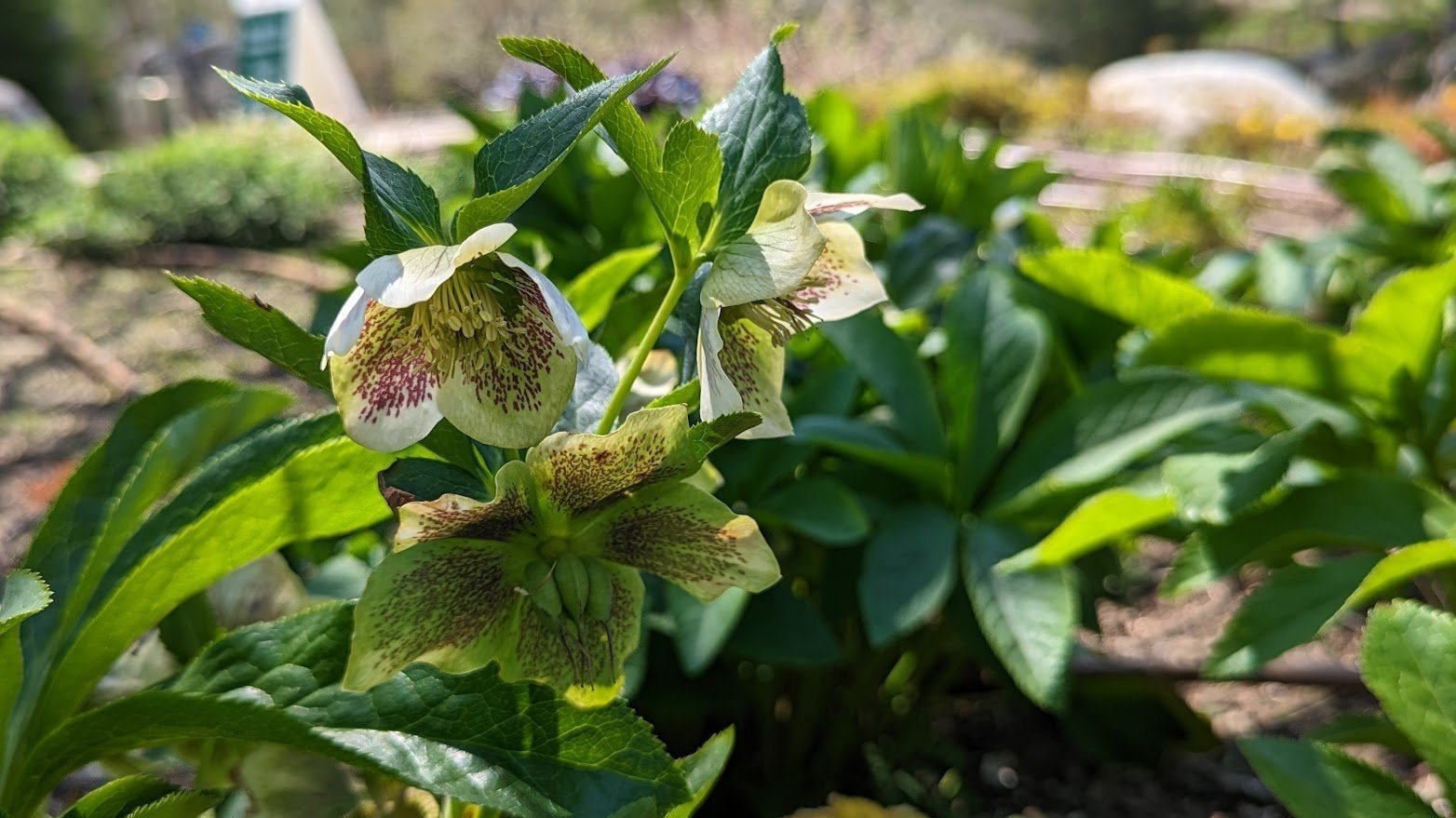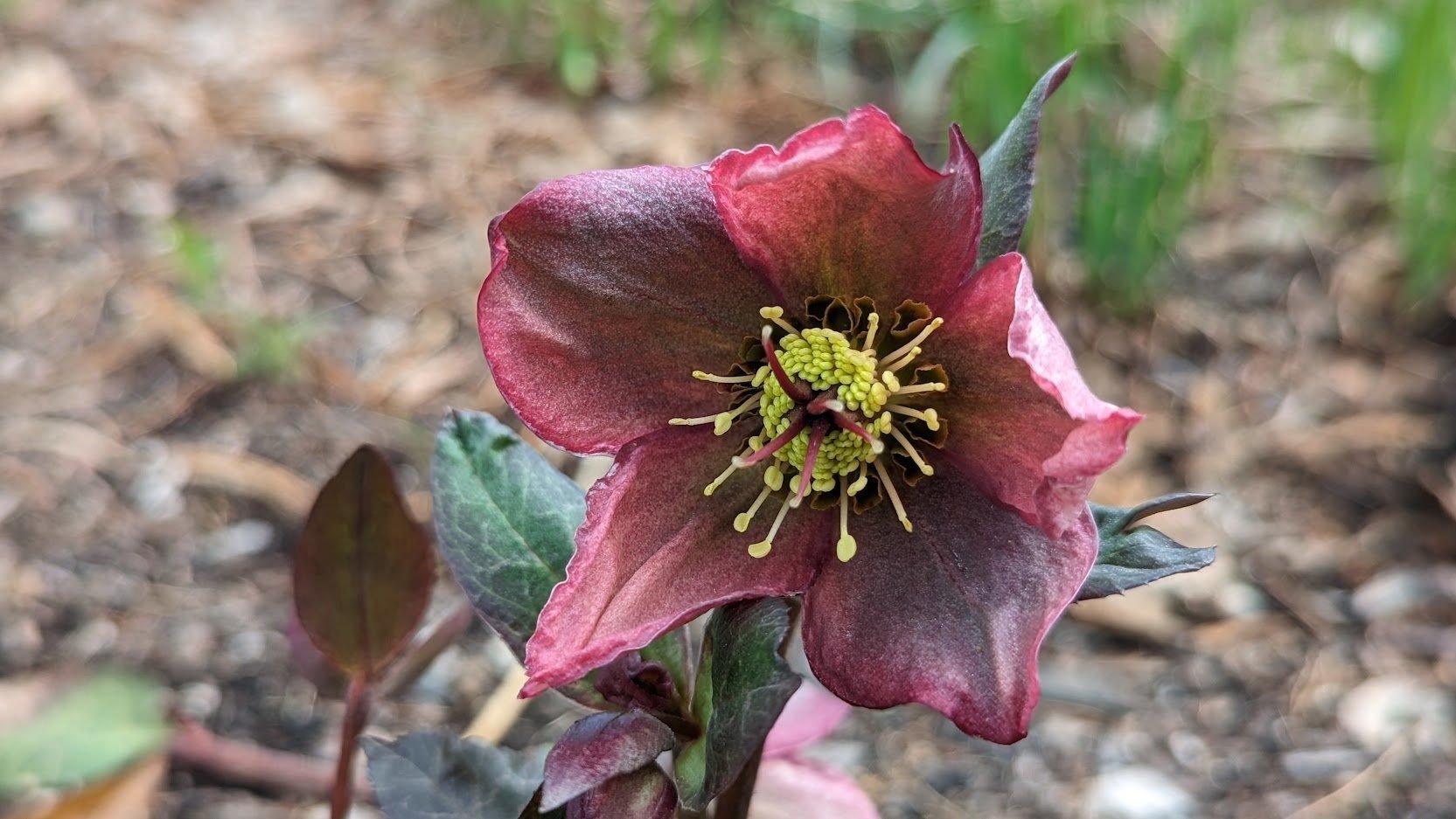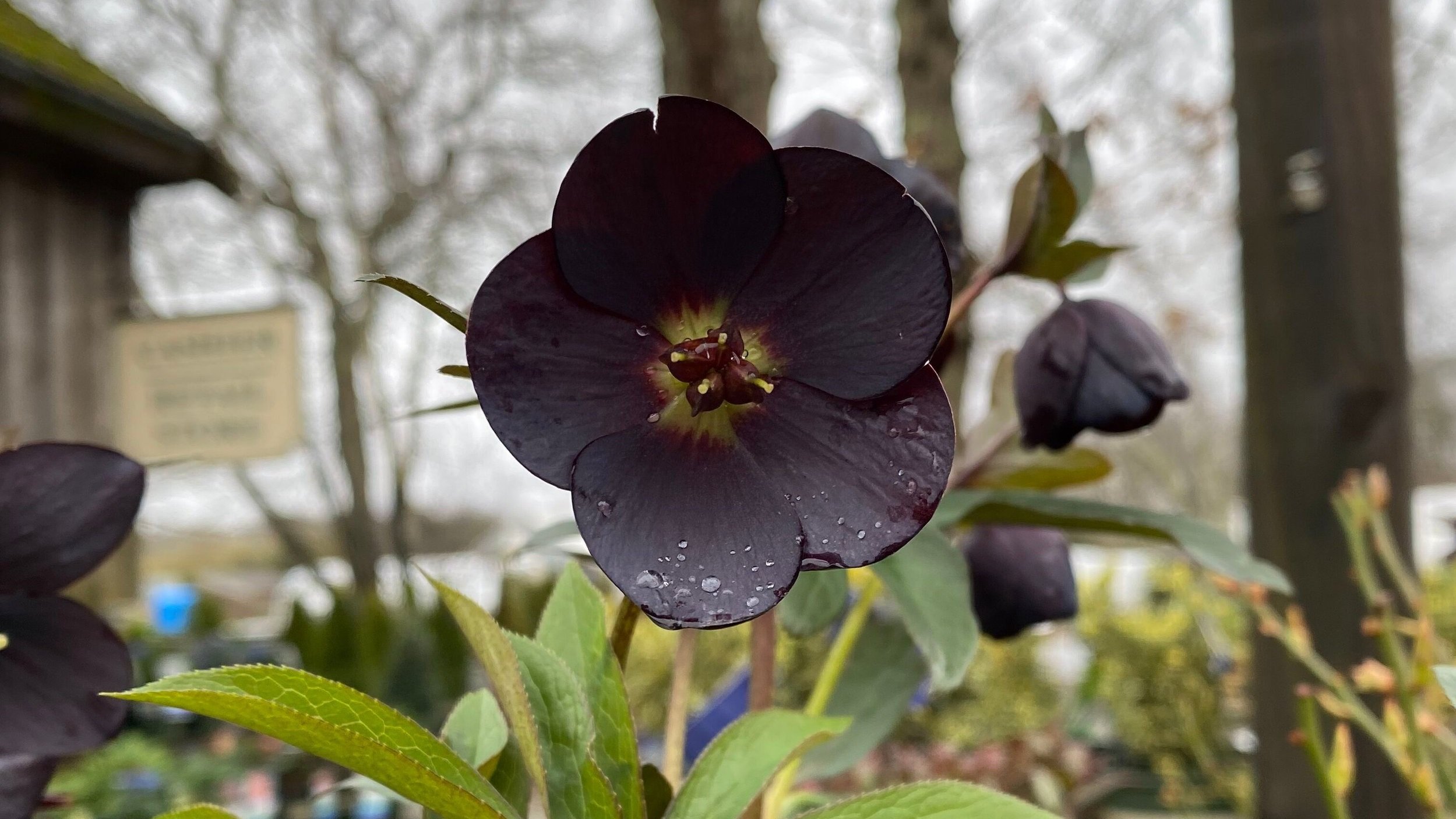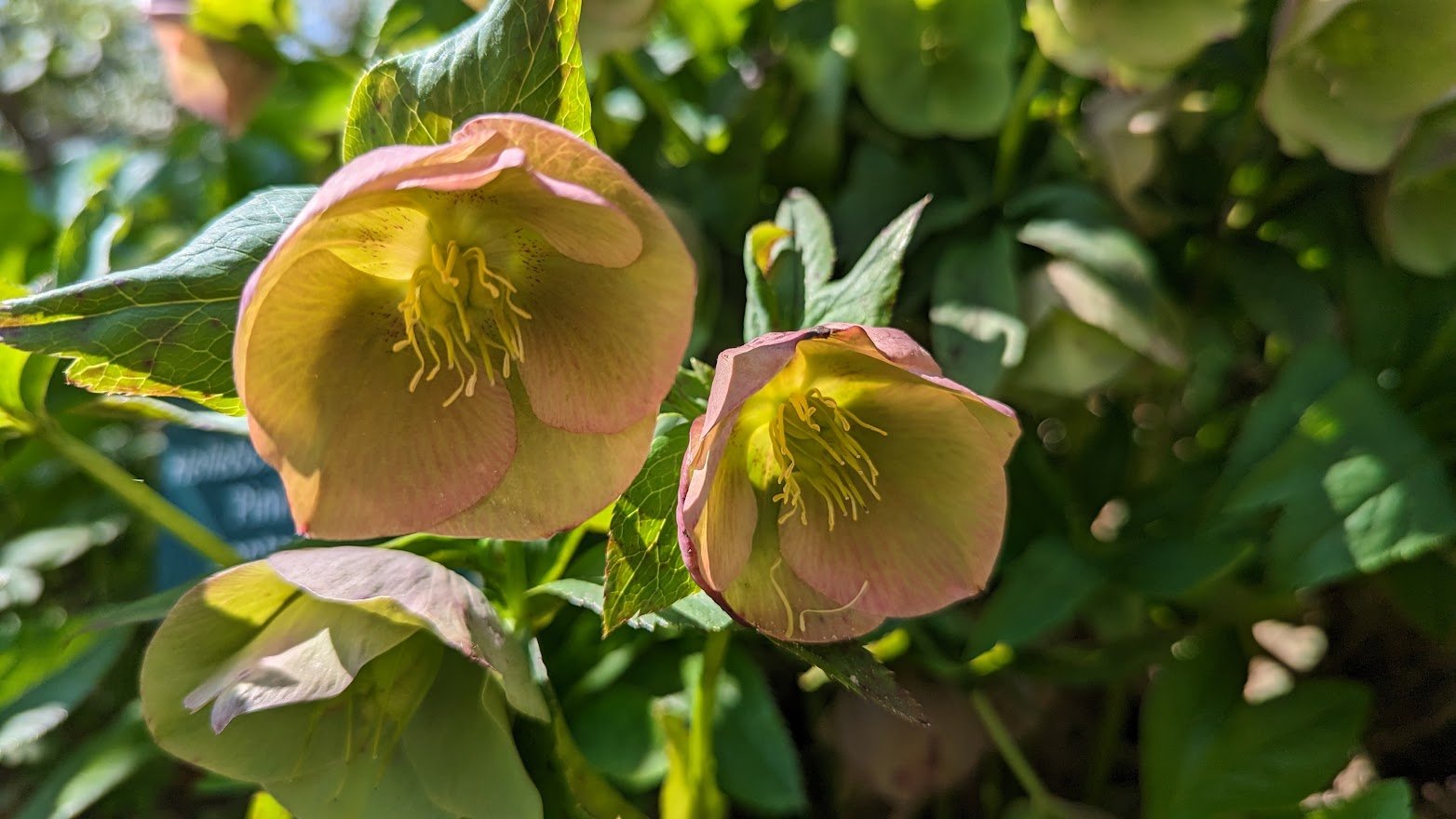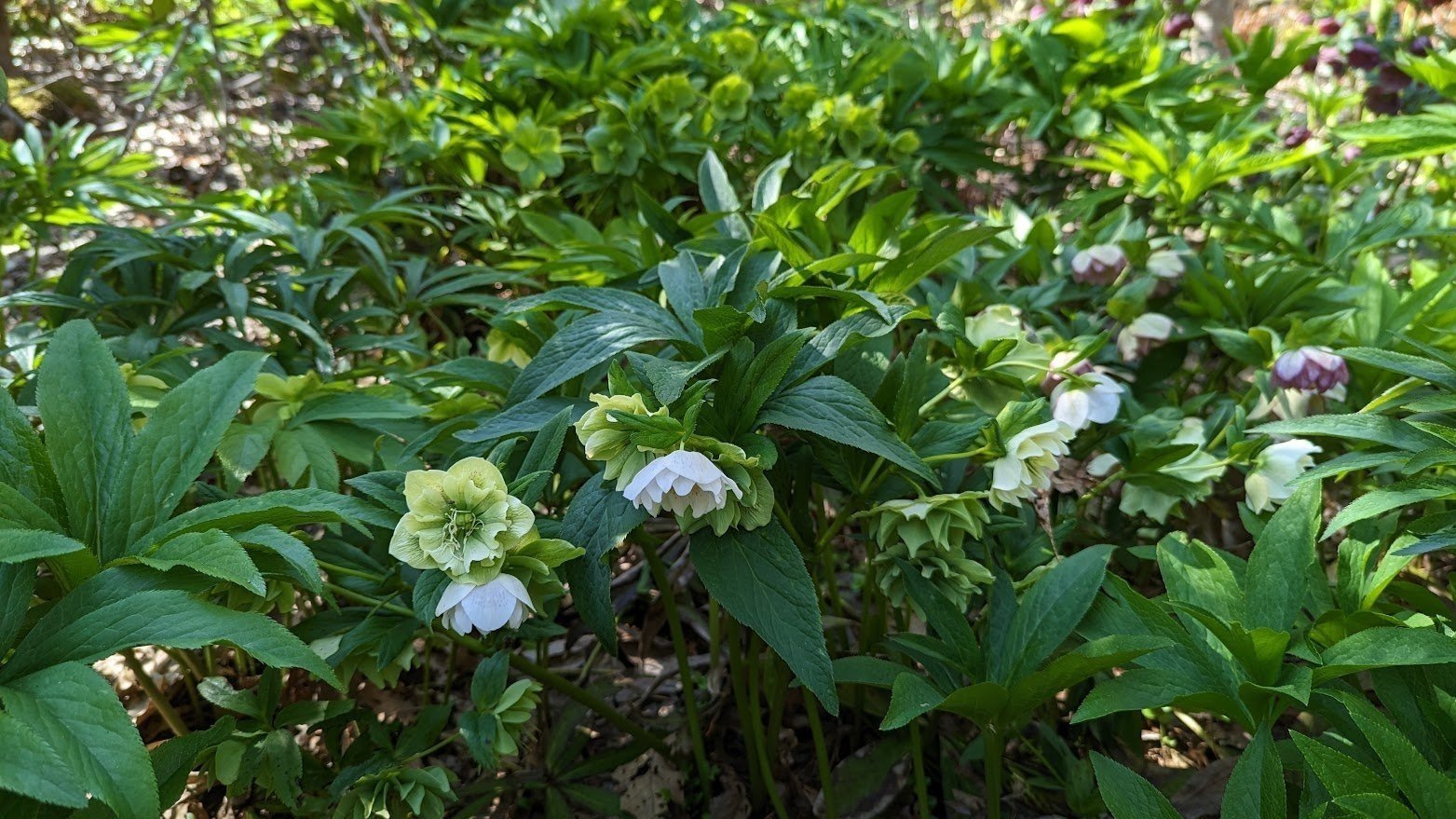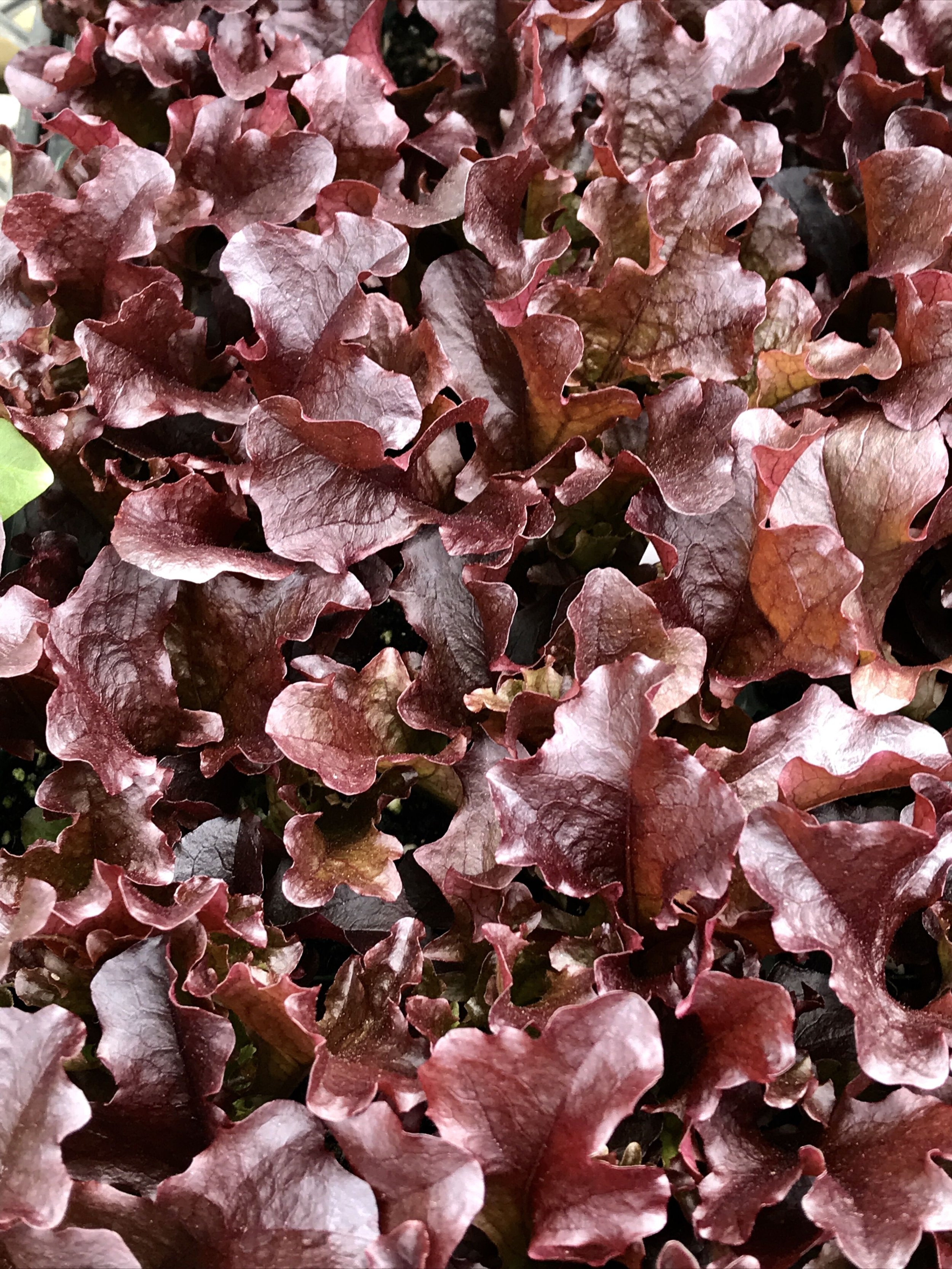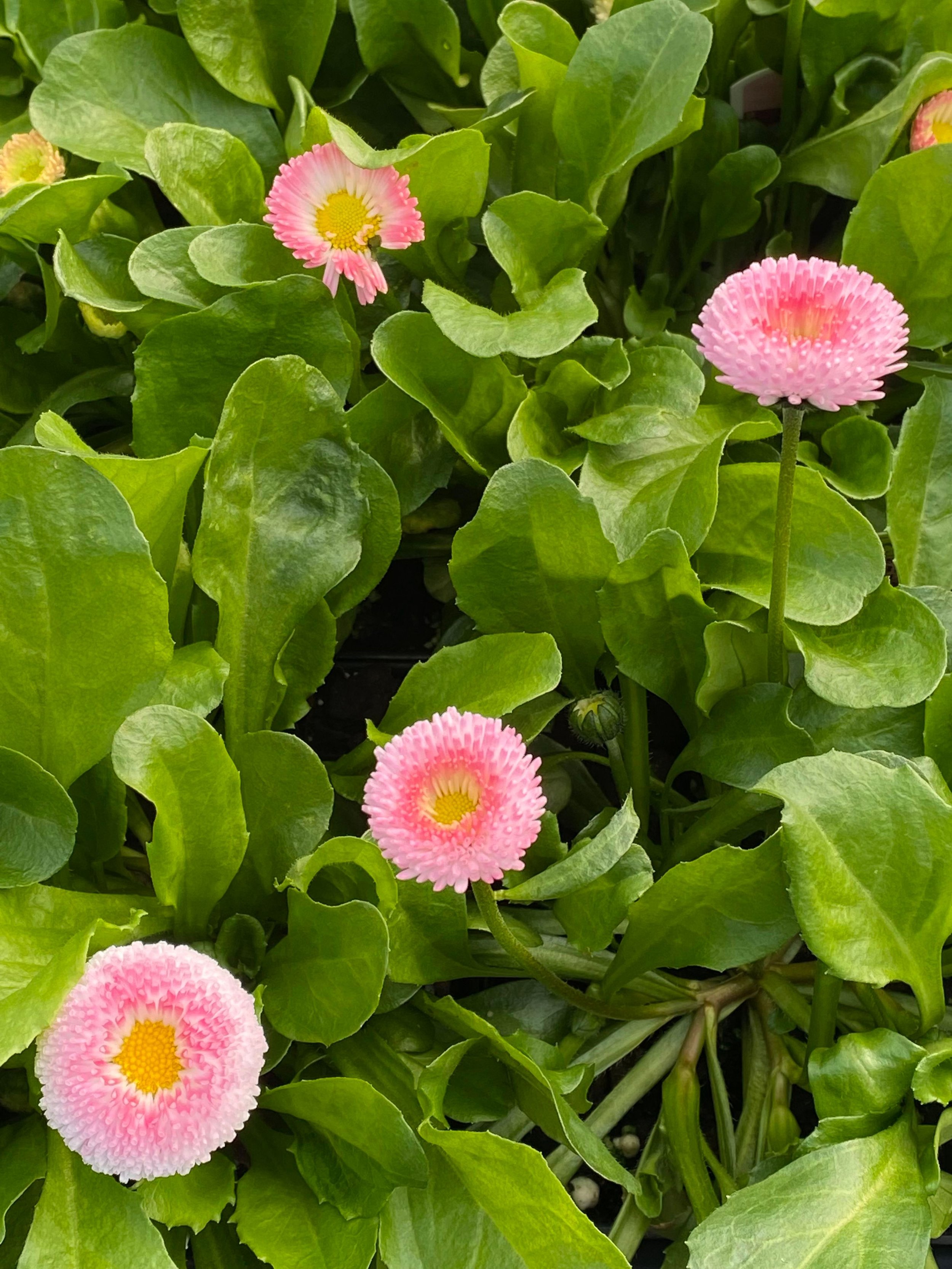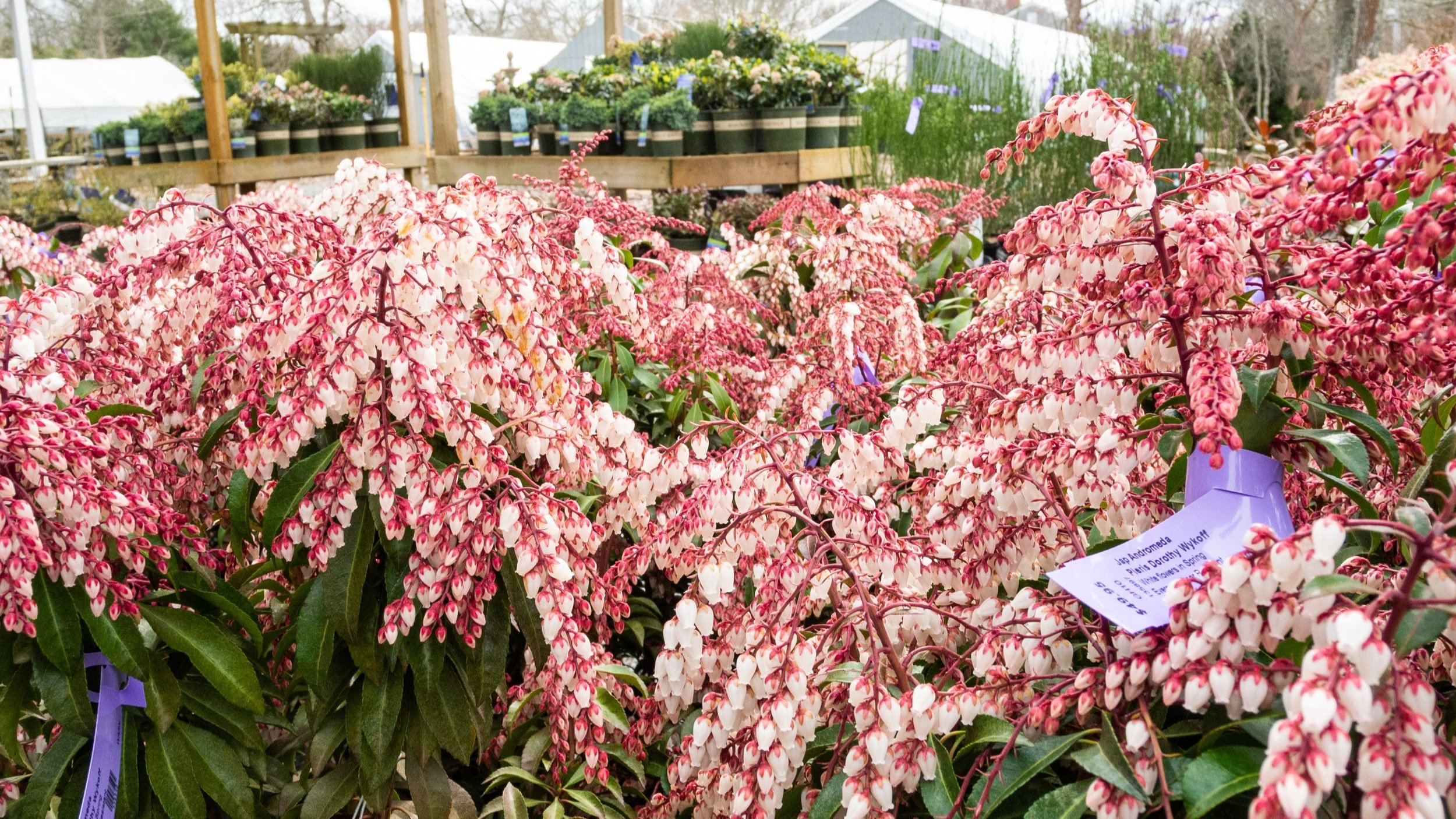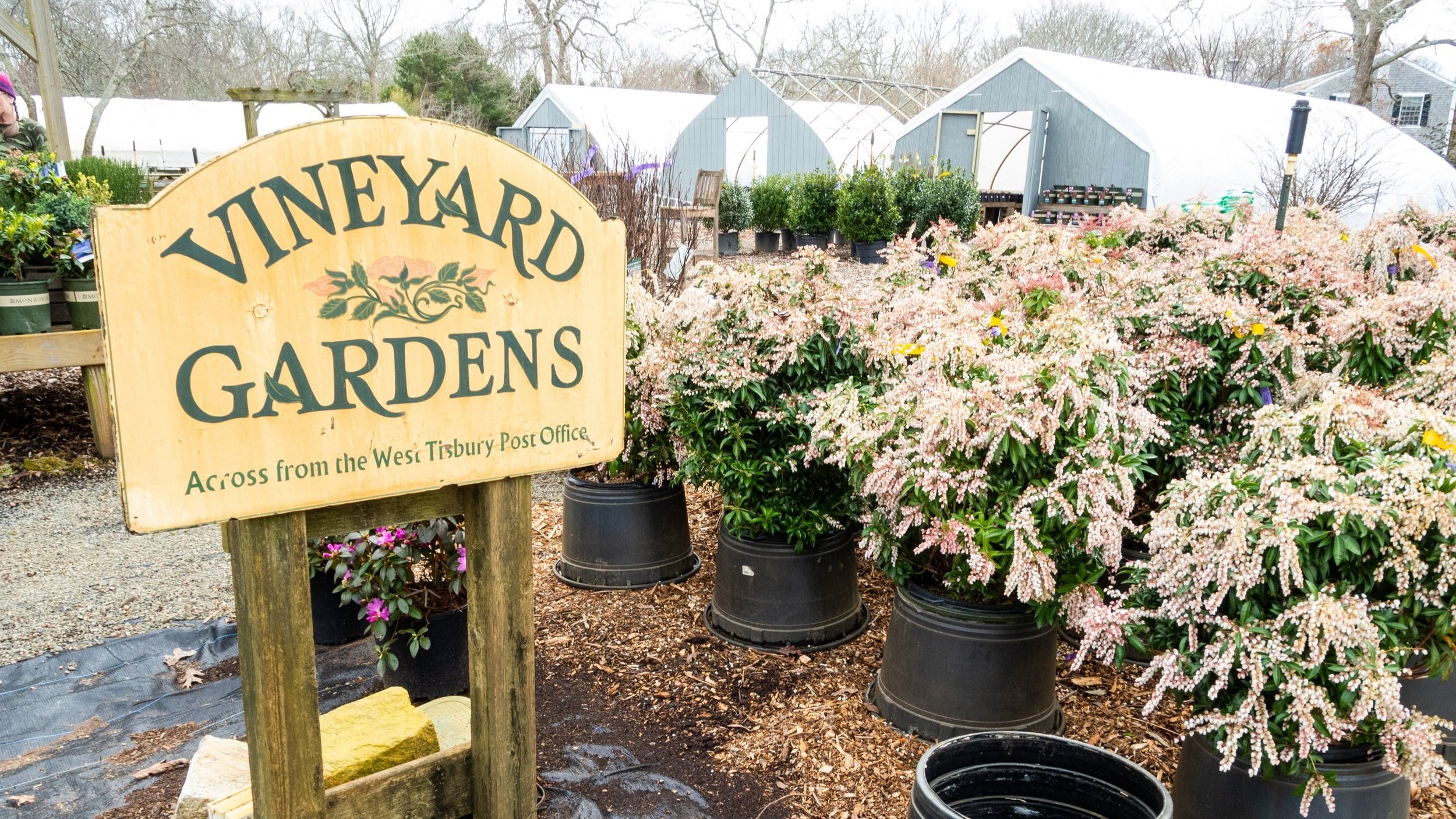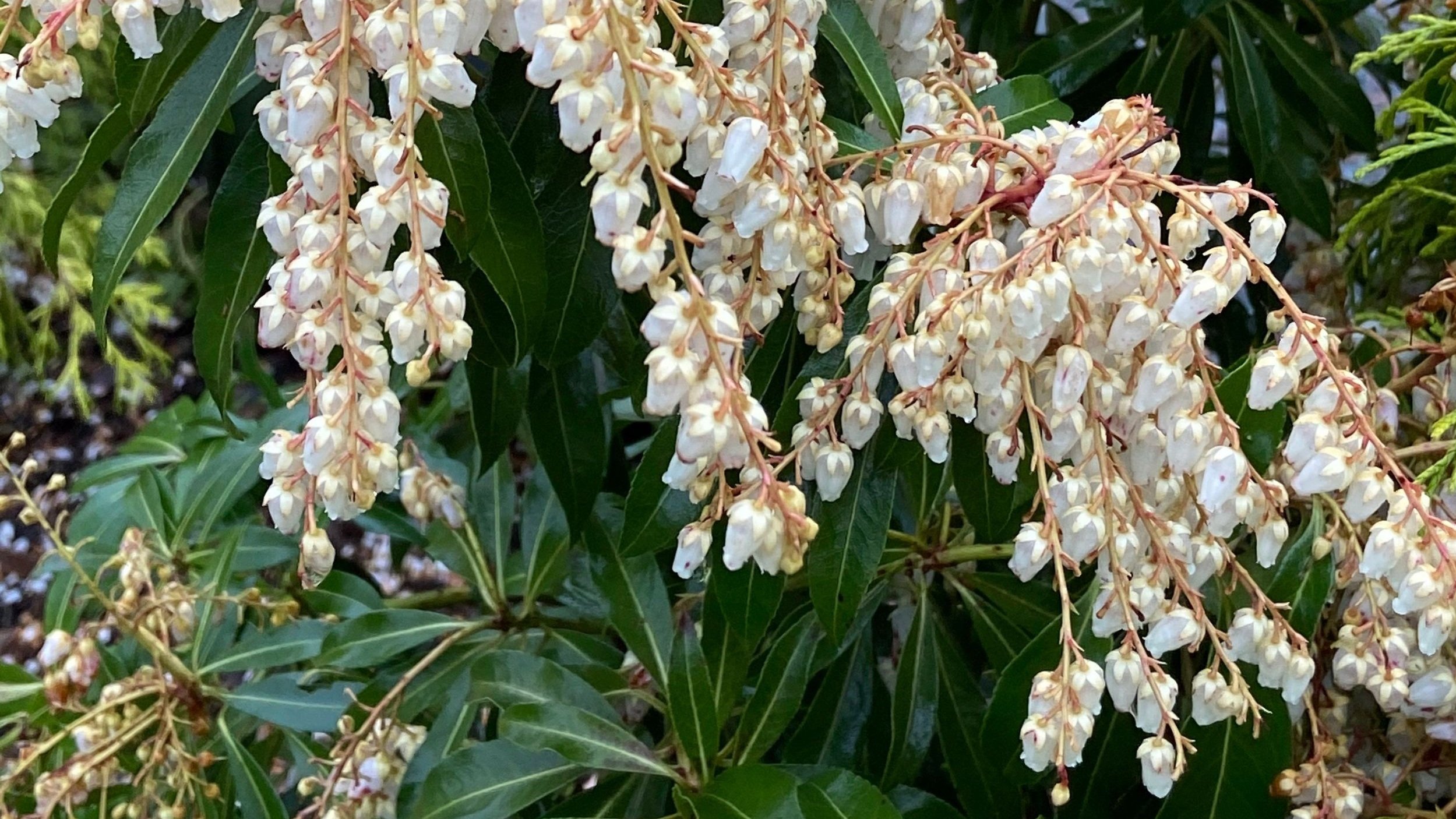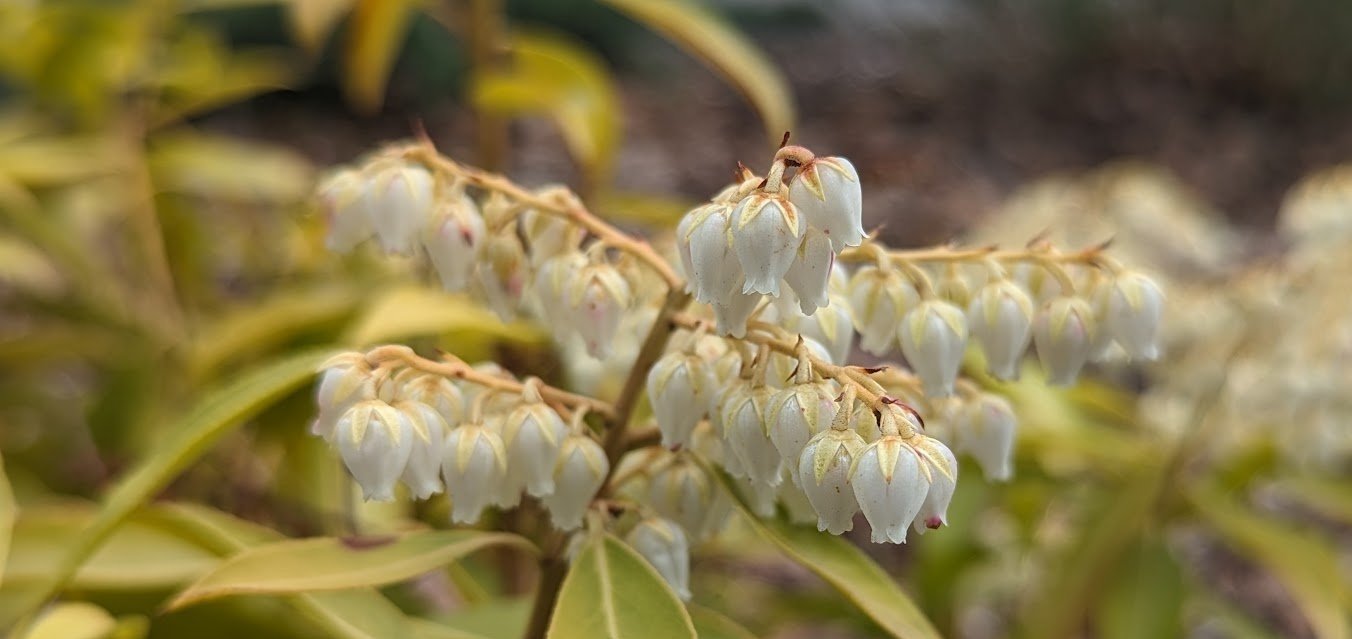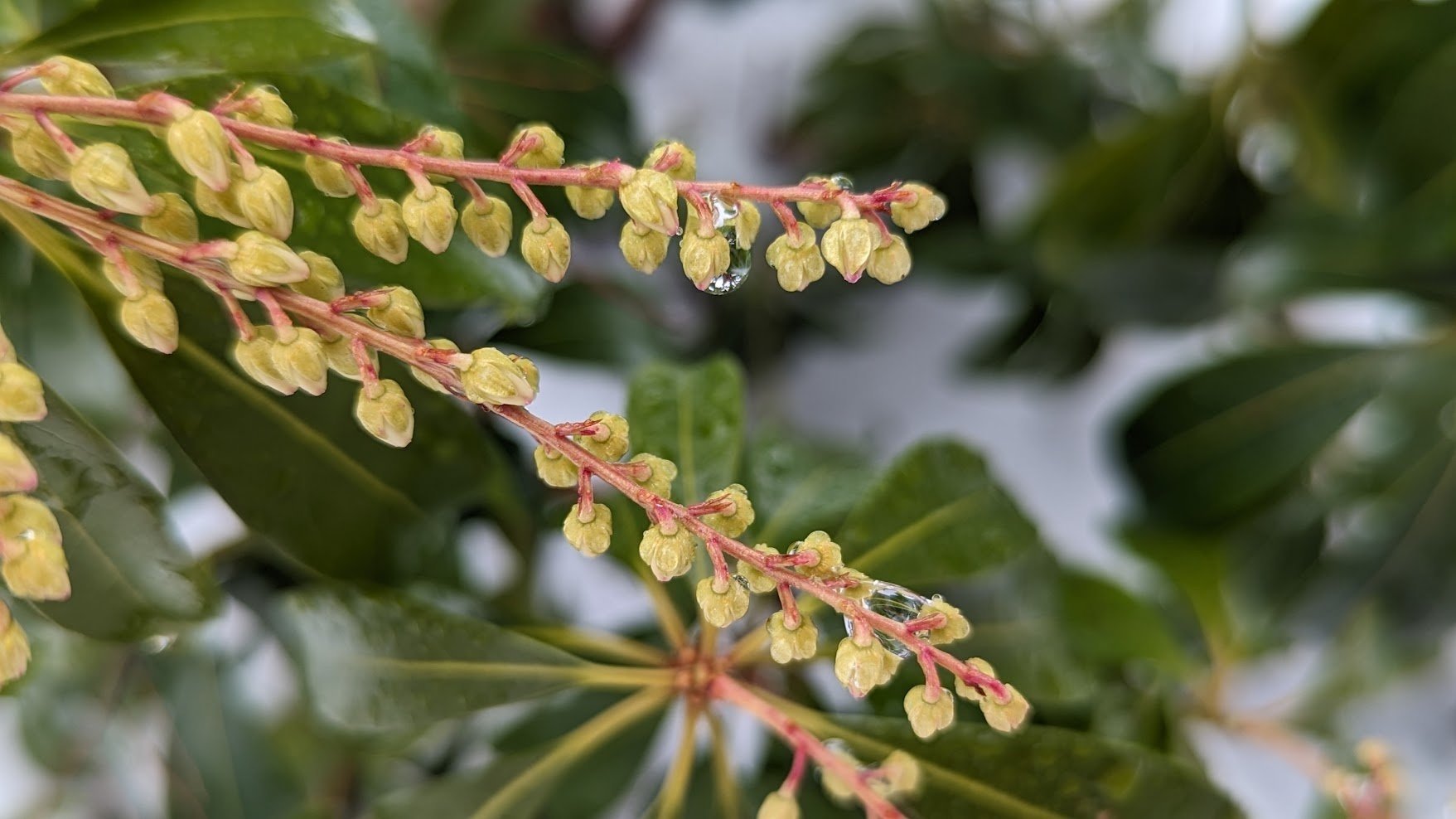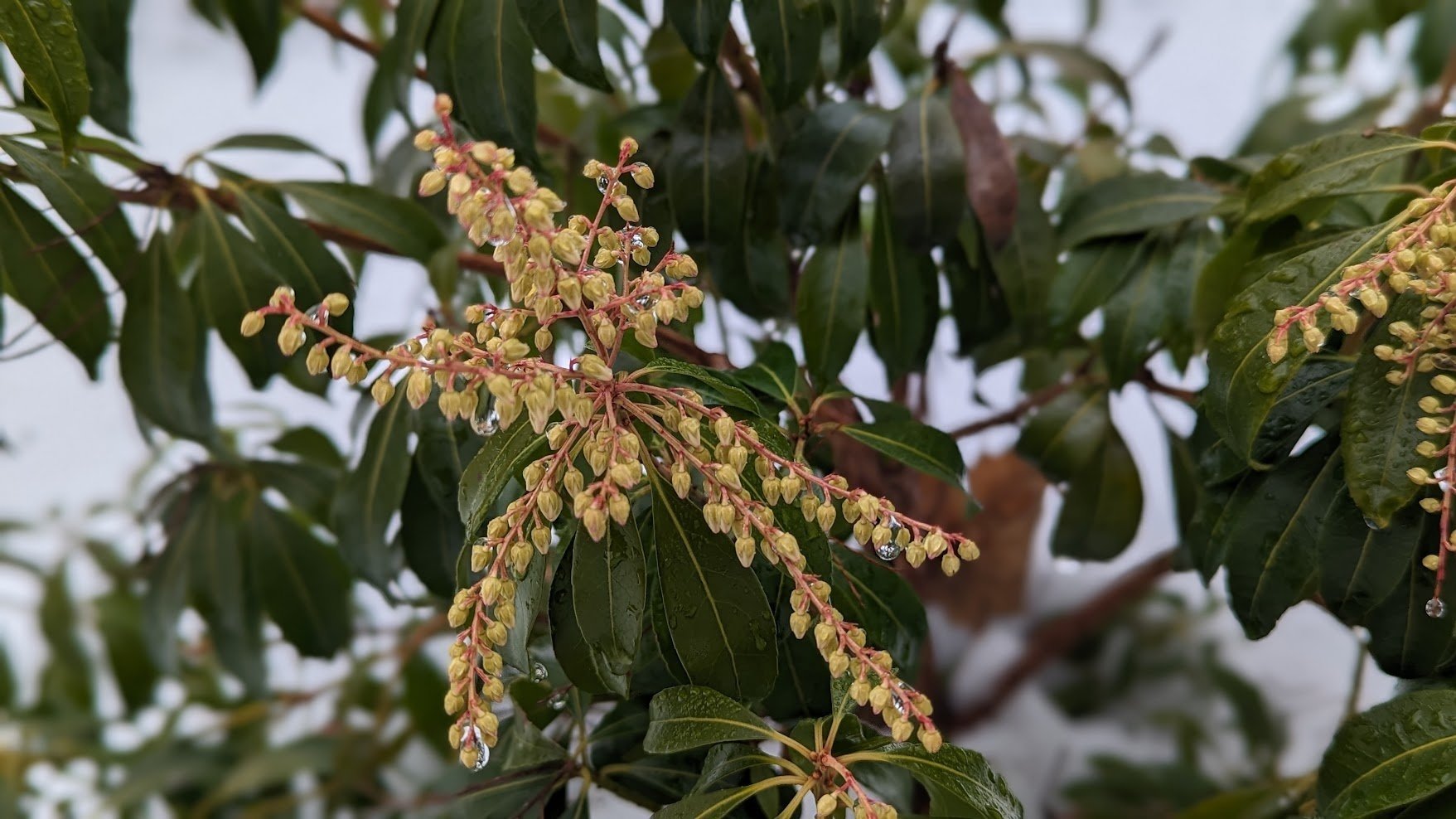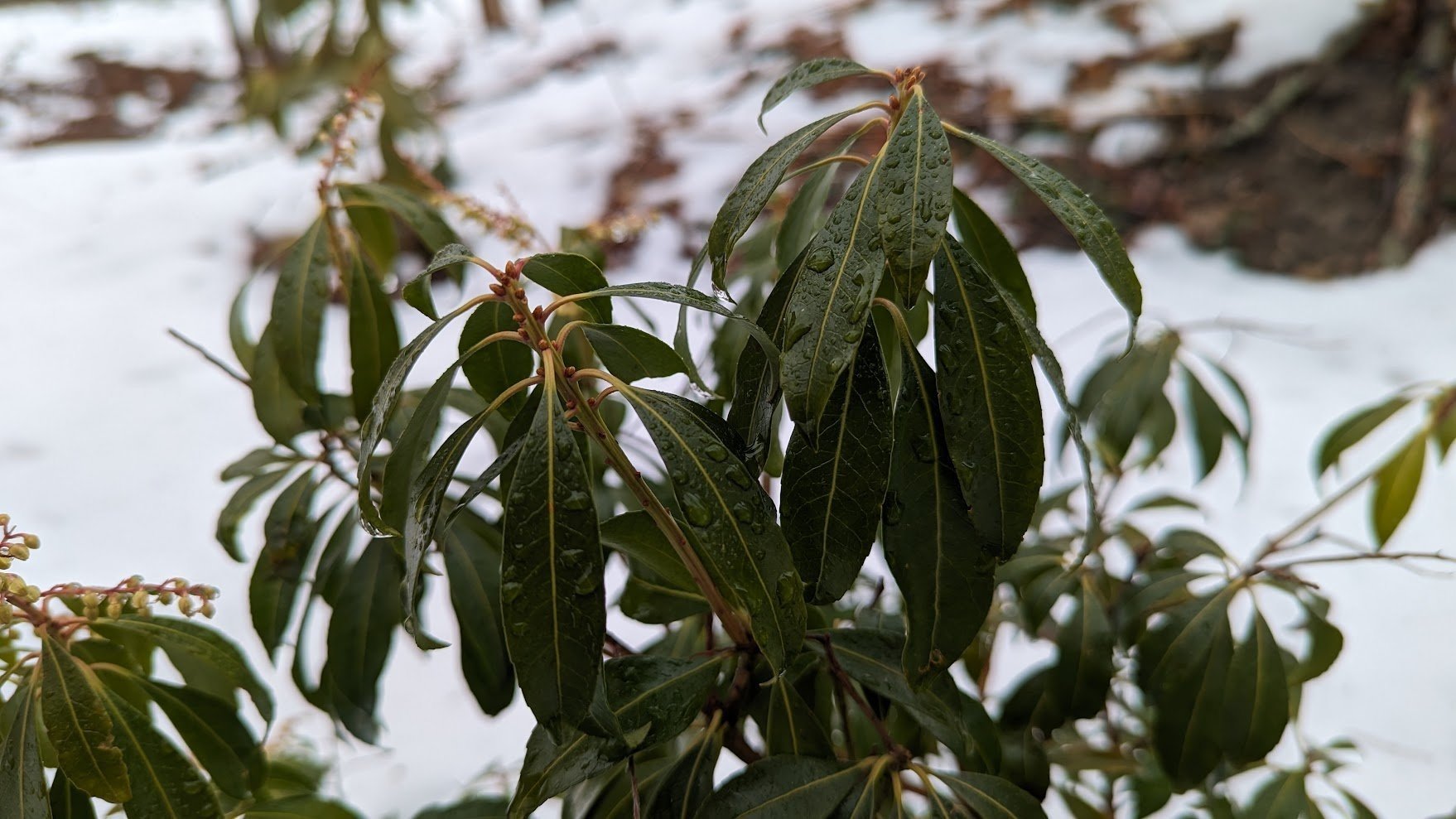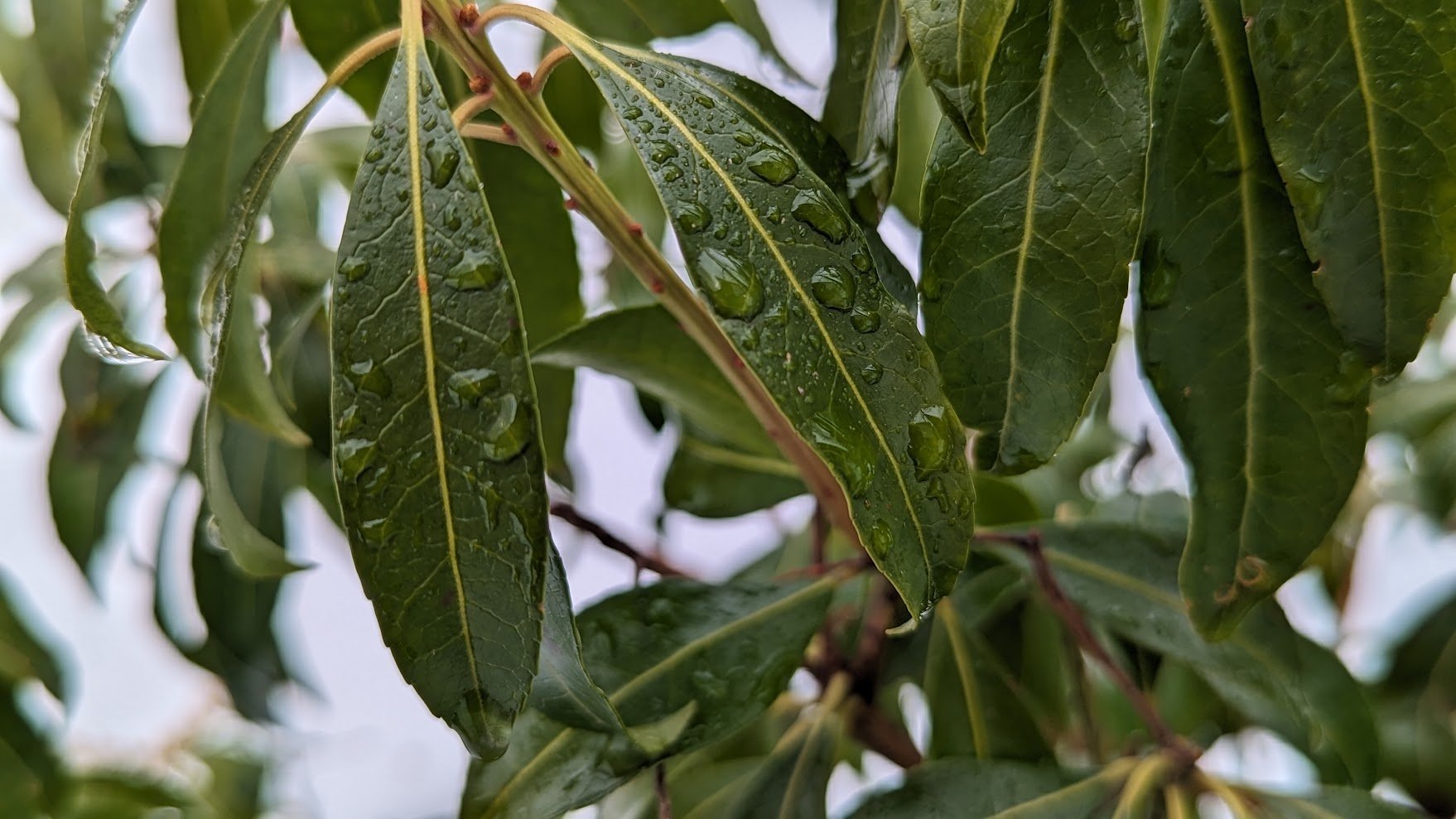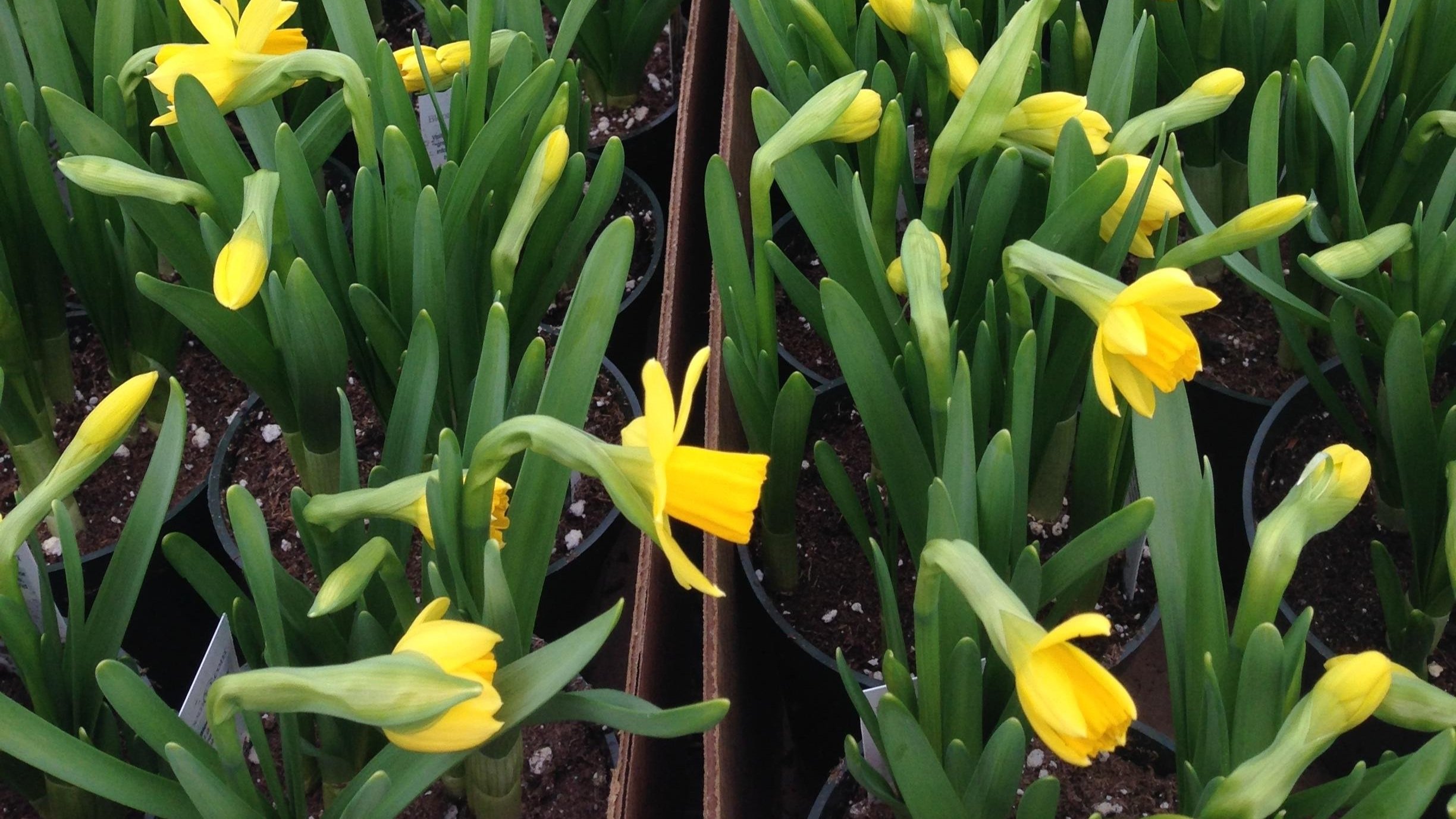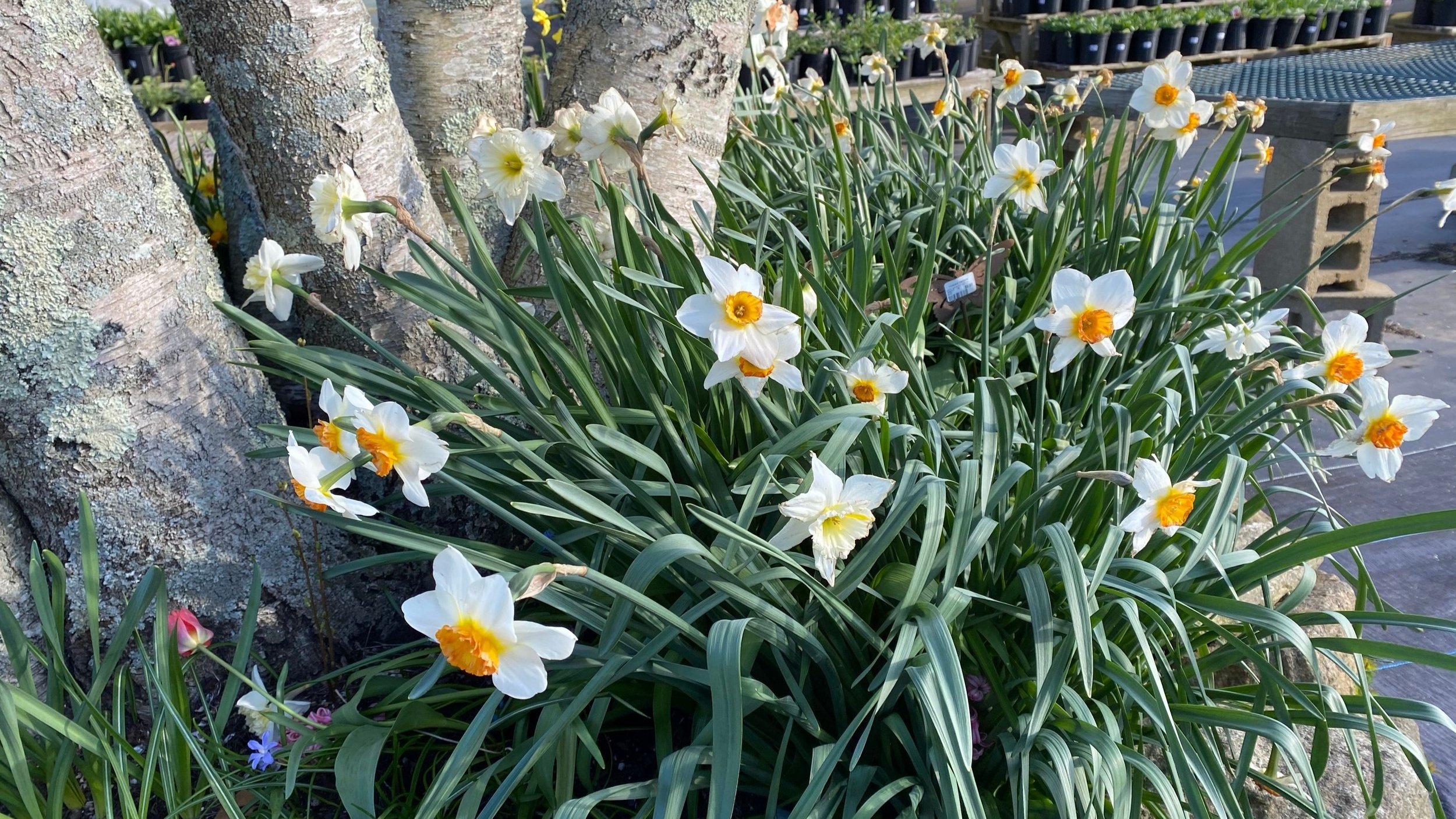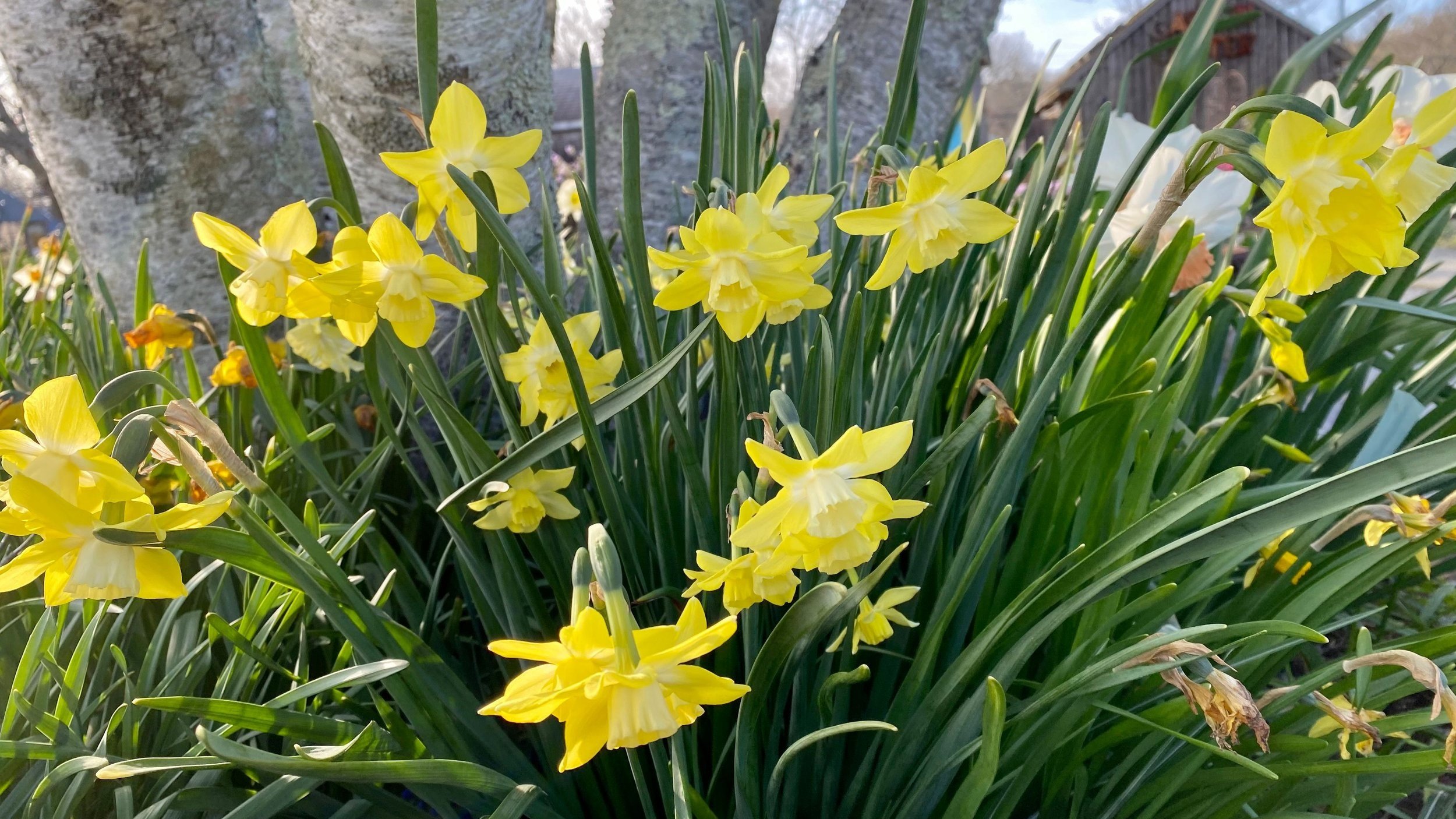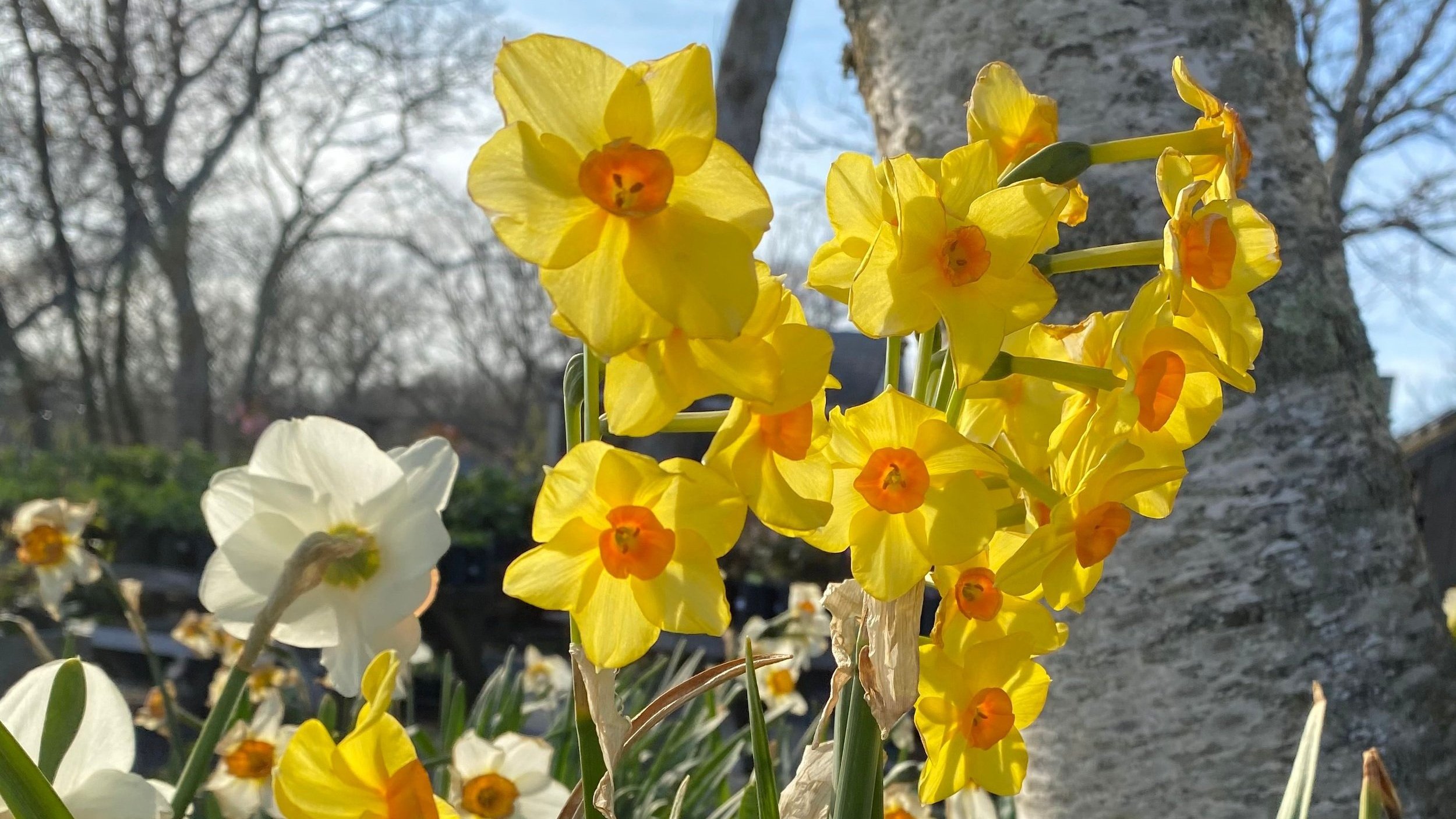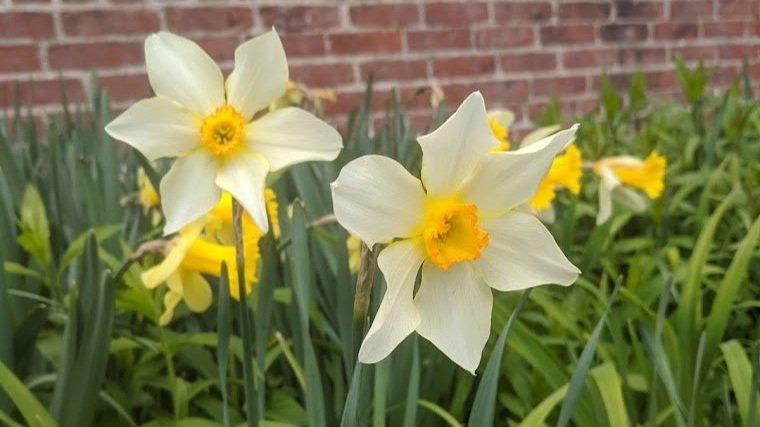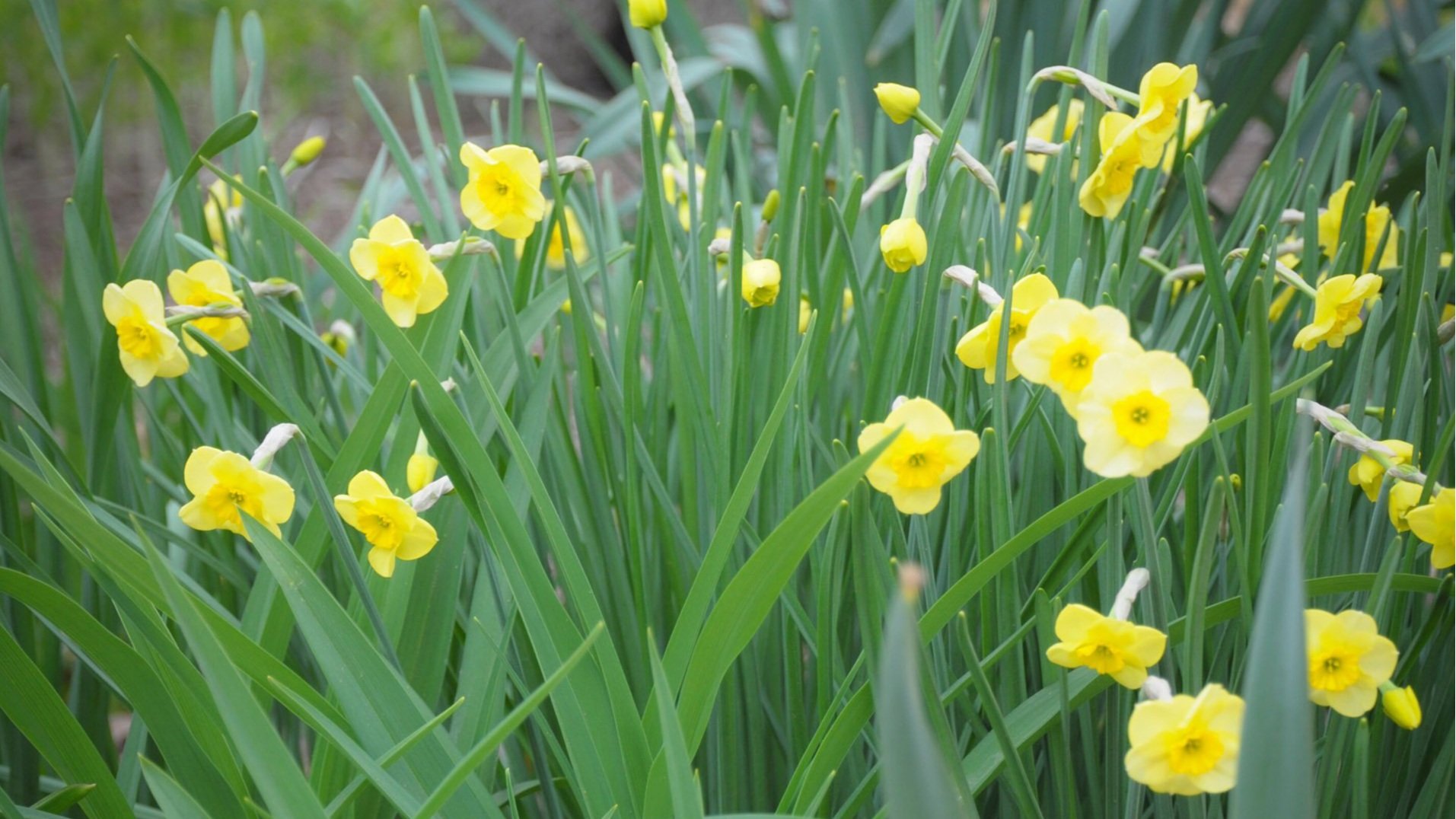MANDEVILLAS
Bring the Tropics to
your Backyard
Looking to add vibrant, long-lasting color to your garden, patio, or porch this summer? Mandevillas are a beautiful and reliable choice. With their lush foliage and stunning trumpet-shaped blooms, these tropical vines thrive in warm weather and full sun, making them perfect for brightening up containers, trellises, hanging baskets, and more.
How to Care for Mandevillas:
Mandevillas bloom non-stop all summer, adding months of color with minimal effort. Their growth habit makes them ideal for vertical accents, while bushier types are great for spilling from pots or hanging baskets. Best of all, they’re heat-tolerant and easy to care for.
Sunlight: Provide full sun, 6+ hours a day for the best bloom production.
Watering: Keep soil evenly moist but not soggy. Water when the top inch feels dry.
Feeding: Fertilize every 2–4 weeks with a balanced, water-soluble fertilizer to keep flowers coming.
Support: Use a trellis for vining varieties to climb and spread
Stunning Color Options:
This season’s selection includes a gorgeous range of colors:
Classic White – elegant and clean
Carmine Red – rich and bold
Soft Pink – gentle and romantic
Deep Red – dramatic and eye-catching
Apricot – a warm, tropical tone
Giant Peach Sunrise – a sun-kissed glow
Double Pink Blush – full, layered bloom
Available in a variety of colors and sizes, from quarts to 5-gallon pots. We have a Mandevilla to suit every space and style!
Whether you're creating a lush entryway, framing a sunny window, or building a vertical garden wall, Mandevillas bring beauty, color, and a touch of the tropics all summer long.
*******************
Sweet Peas


